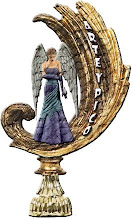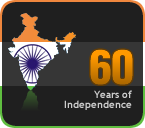 The feast (lunch) after the muhurtham used to be a grand one with everyone fed with various kinds of vegetable dishes, sweets and pradhaman (sometimes two) till everyone was fully satiated.
The feast (lunch) after the muhurtham used to be a grand one with everyone fed with various kinds of vegetable dishes, sweets and pradhaman (sometimes two) till everyone was fully satiated.Afternoon was the time for relaxation and play - this came in the form of nalangu, where everyone teased one another with songs, all the while the bride and the groom sitting on a 'pattu payi’ a mat woven with a special soft reed, facing each other rolling a coconut to one another. For the nalangu, the bride had to invite the groom with a song and a namaskaram to play with her. Otherwise the bridegroom’s male relations would not allow him to budge. Once they were seated on the mat, they applied sandal paste on each other’ arms and feet, combed each other’s hair, applied pottu and showed the mirror to each other to admire their handiwork. The singing session went on until everyone got tired, and then arathi was performed
For the next three afternoons also there used to be nalungu with new songs composed on the spot. I remember lines from a couple of songs - like the son-in-law brushing his teeth with coffee, and the daughter using lime and rice flour to make up her face.
In the evening usually there used to be music concerts or harikatha kalapshekam, or dance performances known as 'sadir' , by well known dancers from Kumbakonam or Thanjavur. Most well-known musicians of those days used to sing at the marriage concerts and that is how they became famous.
In the evening another homam was conducted by the newly wed couple with the help of the priest. During this homam, they were led outside by the priest and shown the star Arundati, who is said to be the ideal wife in devotion and steadfastness. And were advised to lead a happy and compatible life like the couple up there.
After this homam, known as ‘pravesam homam’ and dinner, the first day of the wedding came to an end. For the next three days the morning homam called ‘auhvasanam,’ ‘nalungu’ and the evening homam were conducted regularly.
On the fourth evening, another feast was prepared for the bridegroom’s people with individual oil lamps placed in front of each place. During this meal also there was much rejoicing and teasing, sometimes to the extent of wasting food. But everyone used to be happy and satisfied. After this dinner the newly wedded couple were taken around the locality in a procession by foot, accompanied by the nagaswaram
This was called ‘patina pravesam’
While walking through the main streets of the neighbourhood, relatives welcomed them with arathi and offered them banana pieces soaked in milk. Gradually changes came here also. The couple was carried in open flower-decked palanquins, instead of walking. My eldest sister and her husband, when they got married in 1926 , were the first and only couple in our family to have the palanquin ride. My mother told me that my sister being so petite and lovely (she was 12 then) was herself like a palanquin doll. The palanquin used to have extremely pretty celluloid dolls at each corner.
When my elder sister Sarada got married in 1937, the ‘patina pravesam’ was conducted in a well-decorated open motor car. The other day when I asked her if she remembered the ‘pattina pravesam’ at her wedding, she told me that all she remembered was nodding off every five minutes or so , and her husband waking her up requesting her not to sleep.
My third sister Rama remembers that her ‘pattina pravesam’ in the car was interrupted by rain and had to be given up. This practice of ‘pattina pravesam’ was given up before my wedding in 1945, which was incidentally a one-day wedding. Four day weddings were out by then.
On the fifth morning the last homam was conducted by the couple - this was the ‘sesha’ homam. After this homam, every single uncle and aunt was treated to return gifts, that is they would be given the amount they had presented to the bride and groom, plus one panam, that is one-seventh of a rupee.
Finally came the aseervadams and namaskaram, followed by arathi. After a simple meal, unlike the previous five days, the bridegroom’s party readied themselves for the return journey. They were supplied with fruits along with food to last them for the next two days, known as ‘kattu chatham’, prepared in such a manner that it would remain fresh for the period of the journey. Along with this, other provisions like rice, vegetables, coffee powder were also packed for the journey.
The bride was left behind, she would join her husband after a year or two, when she attained maturity. Another function called ‘griha pravesam’, would be held at the bridegroom’s place for this.
The bride, a mere child of eight or nine, went back to her wooden doll and playthings till then.
Concuded.







